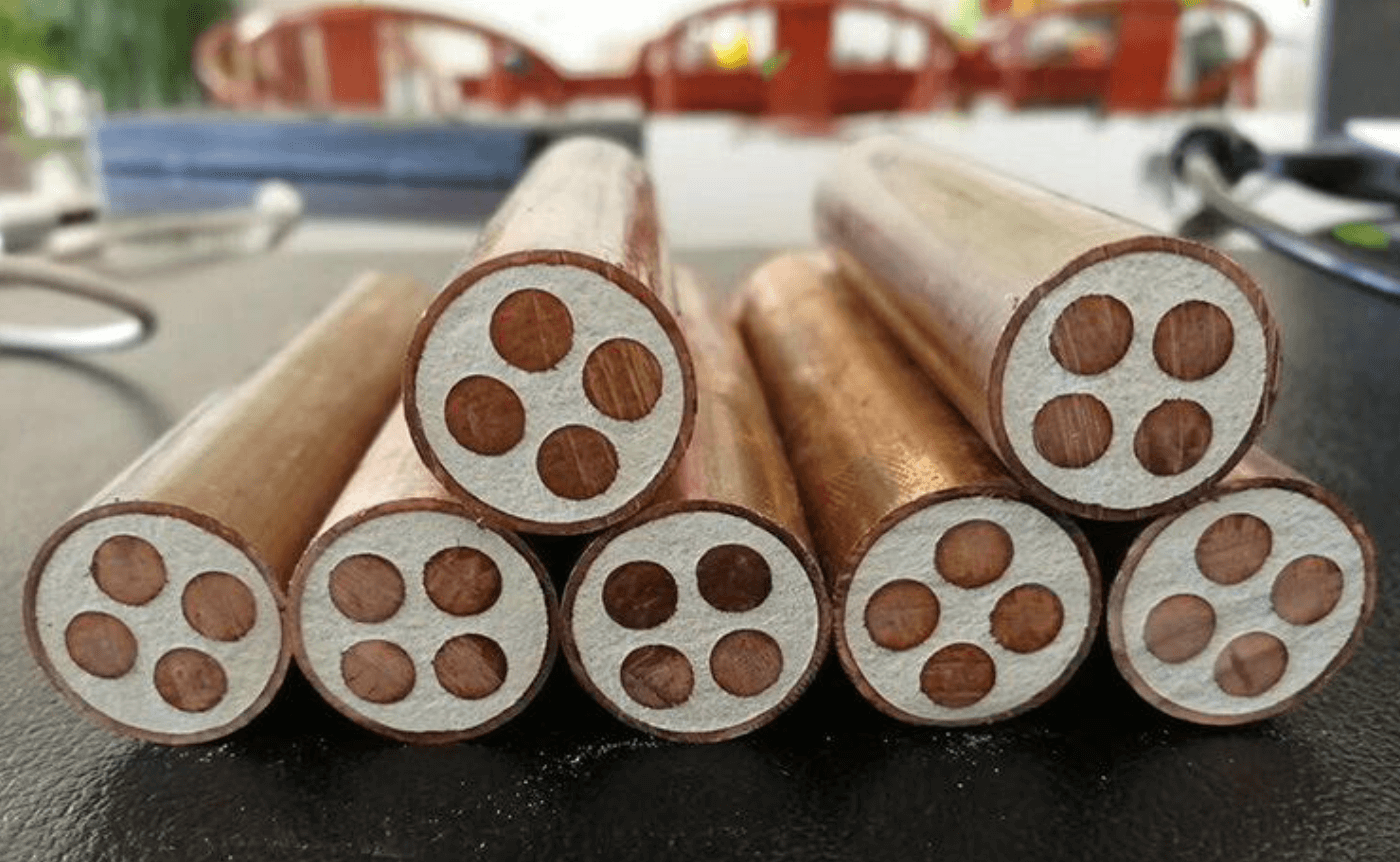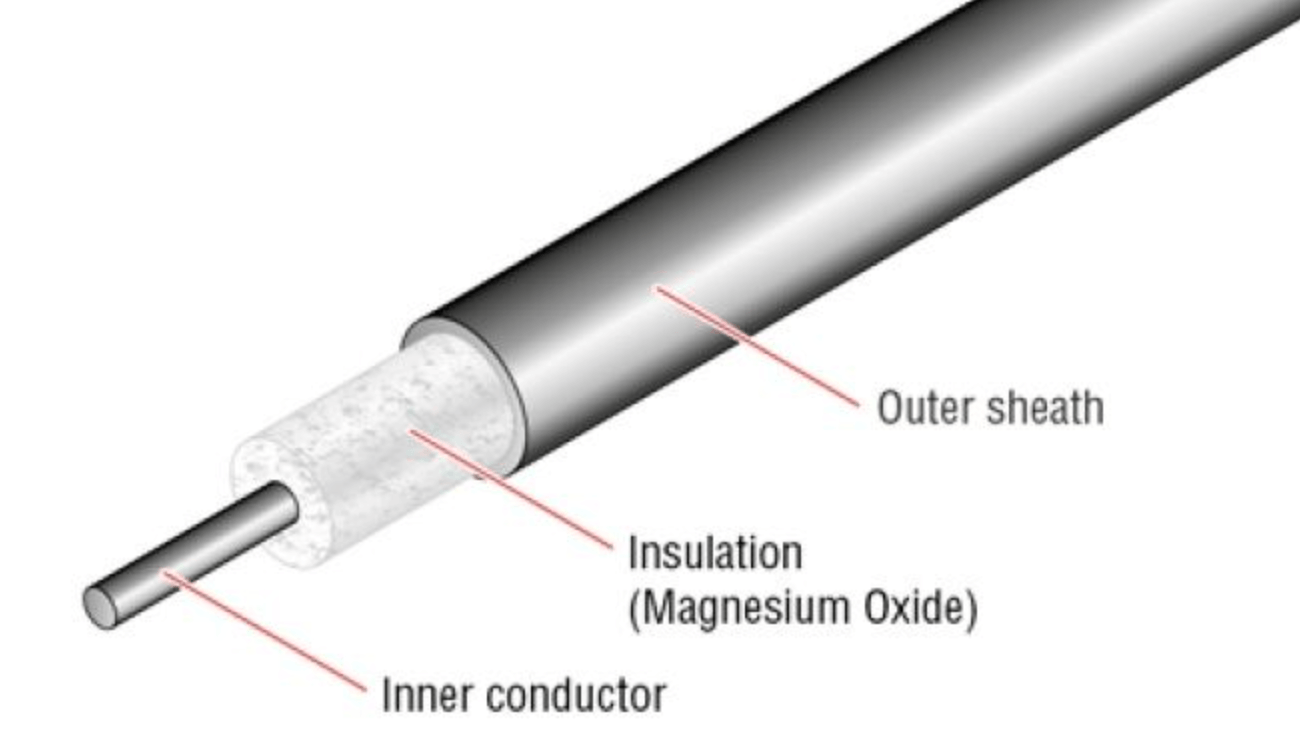
If you look closely at ant piece of equipment, building, plant, device or structure, you’ll likely find one common component: Wires and cables. Cables are the lifeblood of many of today’s plants and equipment. However, mineral insulated cables are an extremely popular choice for high-performance applications. In this post, we’ll explore what these cables are, and why they pose an extremely viable choice over many other open wire alternatives available out there.
MI technology, used in high-performance cable manufacture, is one of the safest types of cabling technologies available today. In fact, the mineral insulated power cable is now the defacto standard when it comes to heating and power applications, such as protection from excessive heating and fire protection in civil, industrial and commercial environments.
So, how is the MI cable manufactured?
Well, the most striking characteristic of the cable is the fact that it is produced using completely inorganic materials. Seamless alloy sheathes, typically made from copper, on the exterior, coupled with magnesium oxide insulation inside, create a cable that withstands fire and extreme heat without compromising functionality or structural integrity. Virtually all electrical applications benefit from MI wire as they are suitable for applications ranging from the 300- and 600-volt ranges. These cables are designed to withstand 2000 PSI, and manufactured to comply fully with the National Electric Code’s articles 330, 500 and 501.
The process of producing these cables involves the insertion of copper conductor rods into bendable copper tubes. The tubes are then pressure filled with magnesium oxide filling which serves as an inorganic fireproof insulator. A swaging process then extends the length of the cable while simultaneously reducing the diameters of the conductor and sheathe.
The use of specific cables depends entirely upon the project or application for which it is used, and the cables’ properties and characteristics. While other high temperature cables are available from leading cable and wire manufacturers, many industrial and engineering project designers now prefer the use of a mineral insulated cable as a viable alternative.
The design of the MI cable came about to support highly critical and sensitive circuit protection applications. Because of their unique construction, MI-based wires and cables are an extremely good choice for use in a wide range of facilities, including: 
· Subway tunnels
· Health care facilities
· Airports
· Petrochemical plants
· Nuclear power complexes
· Waste incinerators
· Oil or gas-fired furnaces
· High-rise buildings
· …and a lot more
In fact, these cables are an ideal, and often preferred, substitute for other types of cables and wires in situations requiring the construction of temperature sensors such as resistance temperature detectors (RTDs) and thermocouples probes. So, what makes the mineral insulated heating cable so versatile over its many other peers?
Well, because of its extremely formidable design and construction, its ability to support high vibration, and its innate quality to withstand high temperatures, these cables allow the easy miniaturization of thermocouples – which, thanks to the use of MI technology, can be produced as tiny as 0.010 in diameter. And, as a result of their unique characteristics, the cables are used in RTDs geared for high vibration applications used in high temperature environments.
Engineers also find the cables uniquely suited for use as extension cables. They typically use them to connect RTDs and thermocouples to their associated data acquisition devices, controllers, wireless transmitters, measurement meters and other instrumentation used in critical applications. Critical infrastructure designers also prefer using a mineral insulated power cable, over other available alternates, in applications where it is essential to maintain circuit integrity in fireproof environments.
Cables play a key role in any project where there is an electrical component to it. Your choice of the right cable may ultimately determine whether your project is a success or a failure. It is therefore of great significance that, when it comes to critical, sensitive and high-performance projects, you use the most appropriate cables for the job.
Here’s what you must look for in cables using MI-technology:
a) Heat and Fire resistance
Due to the inorganic materials used in the making of MI wire and cables, they are extremely heat and fire resistant. Theoretically, they could operate in conditions generating temperatures between 1982ºF and 1083ºC, providing projects the ability to deliver heavy current overloads and high temperature resistance.
b) Waterproofing
Given that the inorganic materials are packed in an extruded sheathe, typically copper, the cables are impervious to any forms of liquid – be it rain water, snow, under oceans or in tanks and containers of other liquids such as chemicals and fossil oils. It is no wonder then, that these cables are extensively used in tankers, ships and other marine vessels that operate in wet and humid conditions.
c) Temperature stability
Temperature changes tend to have an adverse impact on cable performance. Frequent changes in temperature leads to condensation, moisture accumulation on the exposed conduits, and eventual rust and corrosion. But, the use of temperature stable, moisture-resistant cables eliminates those risks.
The design of the mineral insulated cable makes it extremely immune to wide temperature shifts. Equipment and structures, using cables made with MI-technology, are assured of temperature stability, even as the temperatures swing wildly. Even continuous and extreme temperature fluctuations won’t impact the cable’s performance.
d) Resistance to radiation
One major source of concern for engineers, especially those working on electrical projects sensitive to external interference, is radiation. Because of cables connect RTDs and thermocouples to sensitive instrumentation and data devices, they (the cables) are susceptible to interference from radiation. If that is allowed to occur, then measurements, readings and analytical data provided by these instruments also become suspect.
If you source your cables from a mineral cable company of repute, the manufacturer will use inorganic material, usually magnesium oxide, as insulation in the cables they produce. That material offers exceptional radiation resistance to the cables. It is that reason that nuclear power plant designers choose mineral Insulated cable over other forms of wiring or cabling product.